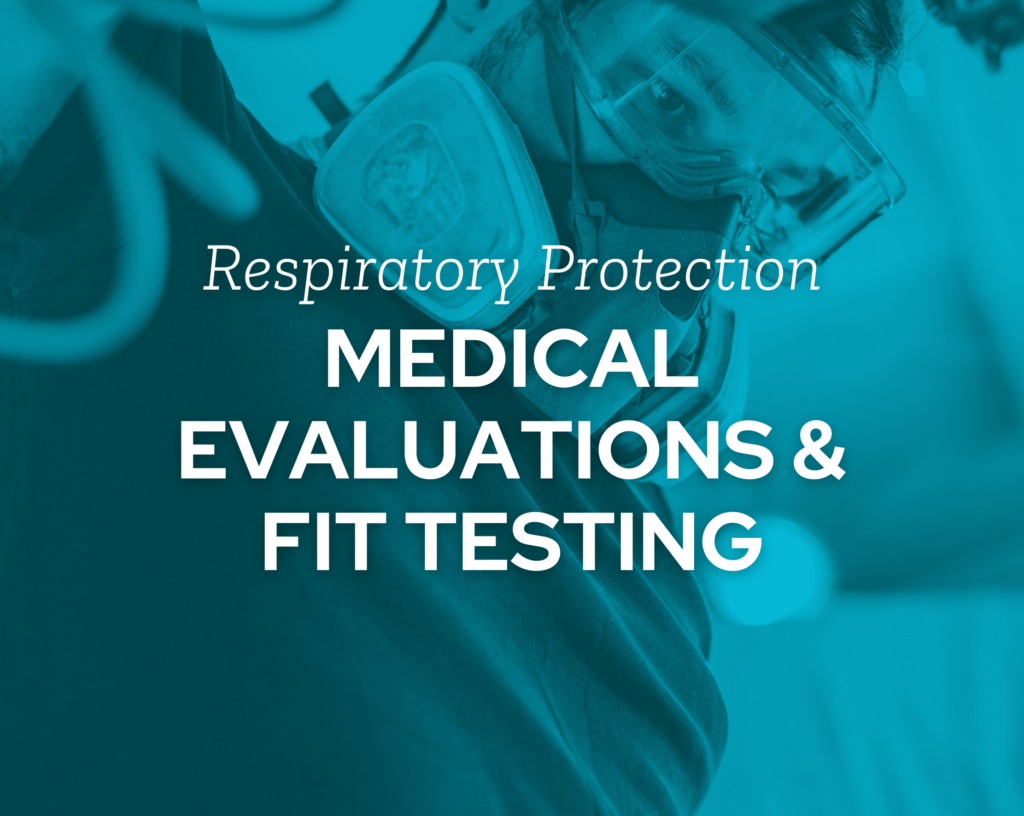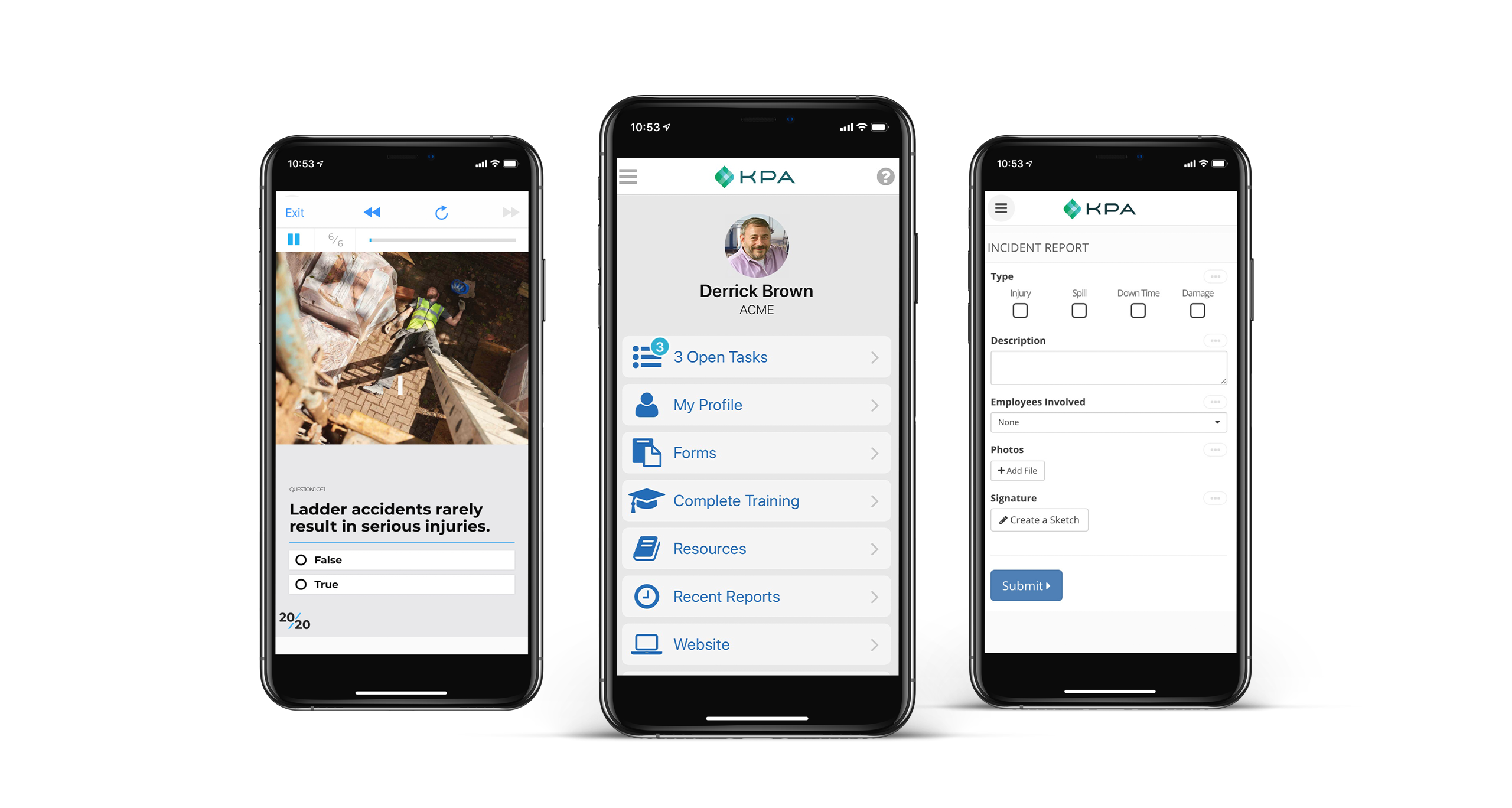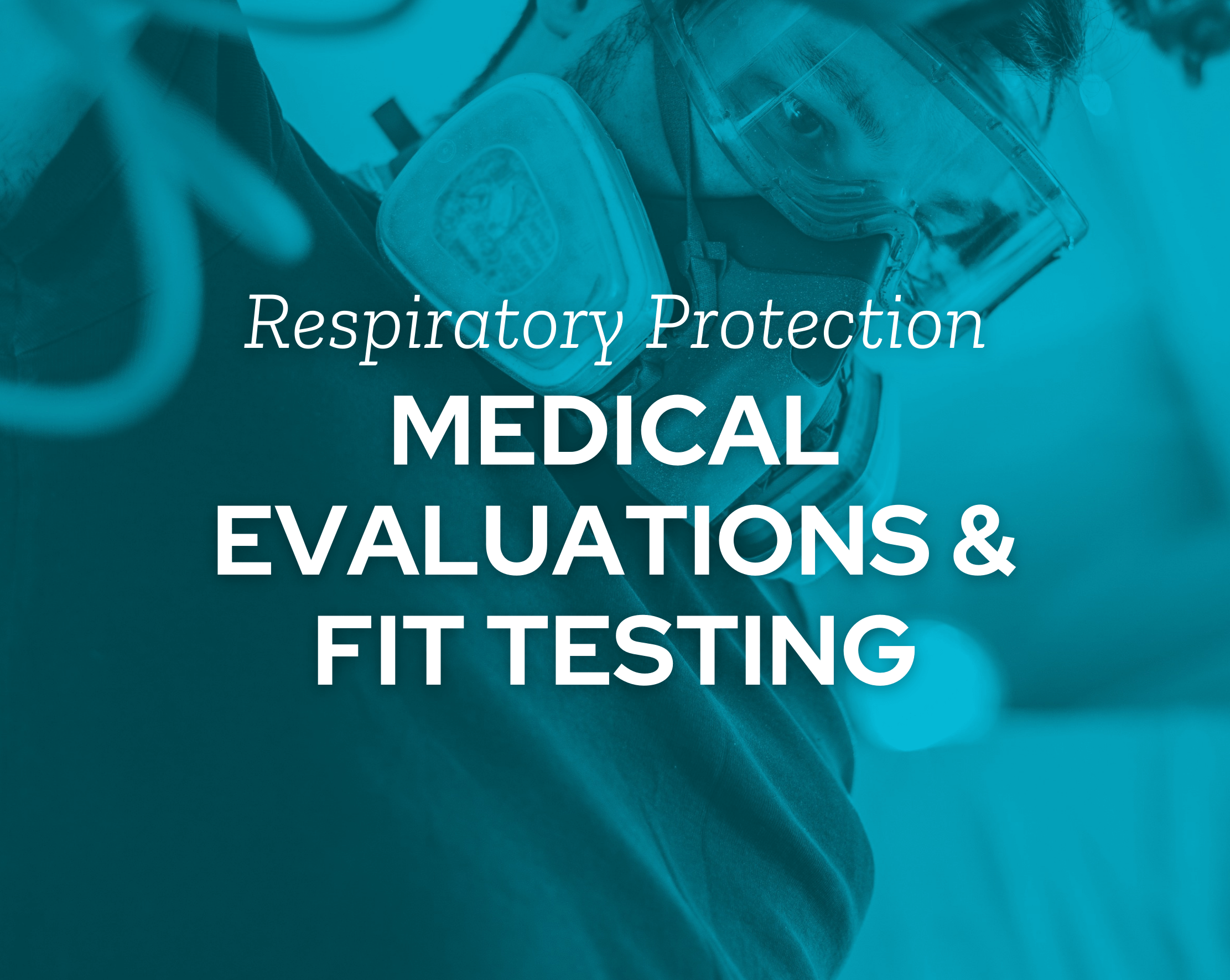Do you know everything you need to know about the 10 most frequently cited Occupational Safety and Health Administration standards? In this series, we’re exploring the most common OSHA violations, one by one. Keep reading to learn how to avoid a respiratory protection violation and protect your workforce from airborne risks.
The OSHA Standard For Respirator Use: What It Is
OSHA’s requires employers to have a respiratory protection program when employees need respiratory protection. Before wearing a respirator, workers must have a medical evaluation first using a mandatory medical questionnaire or an equivalent method. Workers must also be fit tested before wearing a respirator in the workplace.
OSHA definition:
“The employer shall provide a medical evaluation to determine the employee’s ability to use a respirator, before the employee is fit tested or required to use the respirator in the workplace. The employer may discontinue an employee’s medical evaluations when the employee is no longer required to use a respirator.” (Source)
Simple definition:
Respirators are a must in workplaces that expose employees to hazardous airborne contaminants. But wearing a respirator can put an extra burden on your body. Workers with underlying medical conditions may be at risk if they work while wearing one. So the Occupational Safety and Health Administration (OSHA) has requirements before any employee can wear one.
Medical Evaluations
The requirements for medical evaluations include:
- Employers must identify a physician or other licensed health care professional (or PLHCP for short) to perform all medical evaluations using the medical questionnaire in Appendix C of the Respiratory Protection standard or an equivalent medical examination. Note that there are different sections within the questionnaire – some are mandatory, and some can be added at the PLHCP’s discretion.
- Employers must provide a follow-up examination for employees whose initial medical evaluation demonstrates the need for one. The employer must provide the employee an opportunity to discuss the questionnaire and examination results with the PLHCP.
- Employers can’t review employees’ responses. Employees should give completed questionnaires directly to the PLHCP.
- Make sure the PLHCP understands the type of respirator you plan to use, the nature of the work, and the work environment.
- Provide time during regular working hours for employees to complete the questionnaire at no cost to them.
Fit testing
Conduct quantitative or qualitative fit testing for all employees required to wear either positive or negative pressure tight-fitting facepiece respirators. This includes both air-purifying and atmosphere-supplying respirators operating in either a positive or negative pressure mode. It does not include loose-fitting facepieces.
Conduct additional fit testing if an employee experiences a change in a physical condition that could affect the seal on a tight-fitting facepiece respirator. This requirement is triggered by a physical change:
- Reported by the respirator user.
- Observed by the employer, a PLHCP, supervisor, or program administrator.
- Physical changes in the employee that might affect the facepiece-to-face seal could include, for example, a noticeable change in body weight, facial scarring, extensive dental work, or cosmetic surgery.
Why Violations Happen
Violations can occur when companies do not implement the following components of OSHA’s Respiratory Protection Program:
- Conduct a hazard evaluation
- Establish a respiratory protection program
- Medical Evaluations
- Fit testing
- Training
Signs You’re at Risk of a Respiratory Protection Violation
- Your workers are exposed to hazardous chemicals
- Your workers are exposed to harmful smokes, gases, fumes, and vapors
- Your employees enter confined spaces to conduct work
- Your workers are exposed to oxygen deficient atmospheres or other hazardous atmospheres
Read up on all of the top violations in the
OSHA Top 10 Resource Hub
What You Stand to Lose When Respiratory Protection Violations Happen
Direct costs: OSHA penalties can exceed $15,000 per violation—and as much per day for every day the issue hasn’t been fixed by OSHA’s deadline. The fine for a willful or repeated violation can be 10 times as much.
Indirect costs:
- workers’ compensation claims from workers exposed to toxic air
- lost productivity due to illnesses and injuries caused by airborne contaminants
- legal and compliance fees
- decreased morale
- negative publicity and reputational damage
Respiratory Protection Violation Prevention Checklist
- Have you identified and evaluated potential respiratory hazards in the workplace?
- Have you documented employees’ exposure to respiratory hazards (i.e., personal exposure monitoring)?
- Have you selected respirators based on the air contaminants employees are exposed to, including the expected exposure level?
- Is your written program available to any employee who wears a respirator?
- Have you provided respirator medical evaluations to workers required to use respirators or who are permitted to use tight-fitting respirators voluntarily?
- Have you fit-tested employees who are required to wear tight-fitting respirators?
- Have you trained your employees on:
How to inspect their respirators and perform a seal check before each use?
How to report problems with their respirators?
How to use, clean, and maintain their respirators? - Do your employees only wear the respirators they have been fit-tested and medically cleared for?
- Do your employees store their respirators in a sanitary location (like a clean plastic bag) and in a way that ensures they don’t get damaged or deformed?
- Do you have records of each employee’s respirator medical evaluation and fit-testing results?
- Do you evaluate, at least annually, your respiratory protection program and employee training to ensure it’s effective?
You Don’t Have to Manage Your OSHA Requirements Alone
Have questions? Looking for more detailed OSHA compliance guidance? KPA is here to help.
To truly protect your workforce and bottom line, you’ll need in-depth information—and not just about OSHA’s top 10, but every potential hazard that exists in your organization. You’ll also need to conduct a thorough evaluation of your facilities to identify current gaps and risk areas.
KPA’s unique combination of software, training, and consulting services can provide the coverage your people and your organization need.



